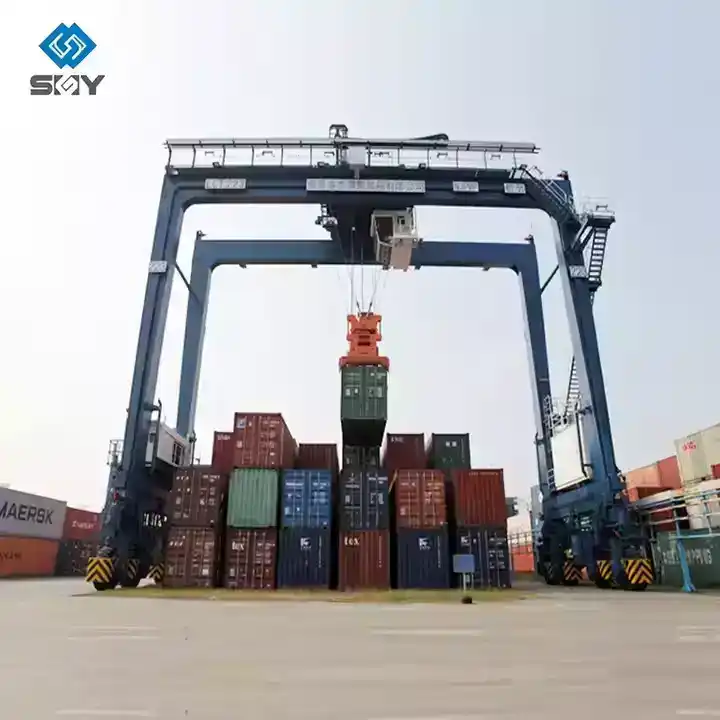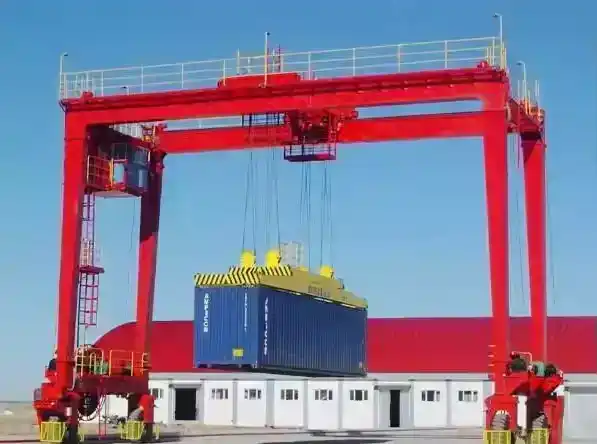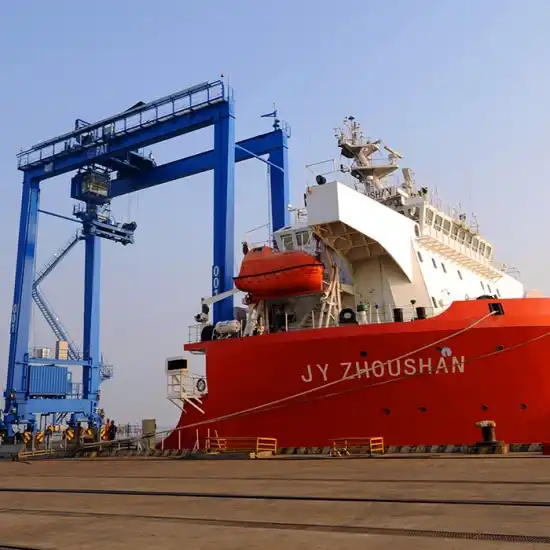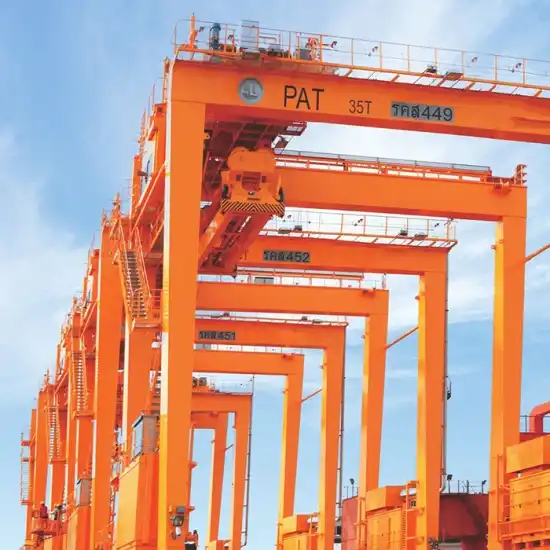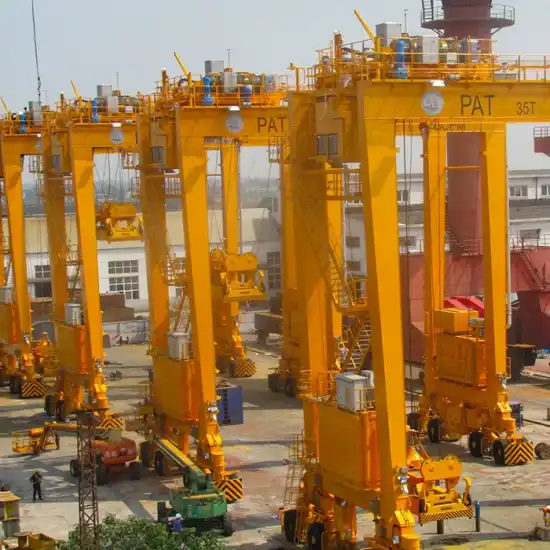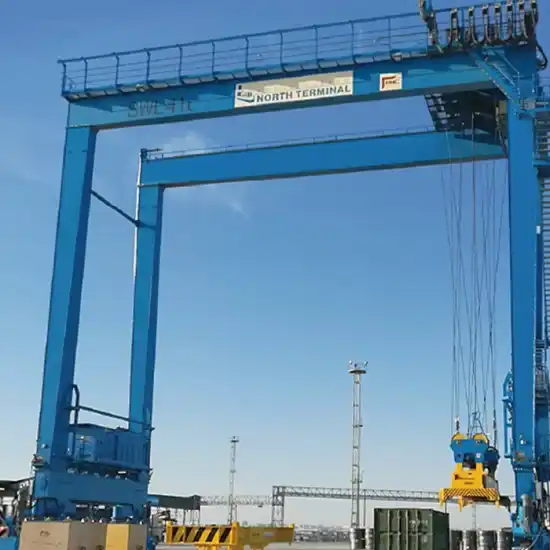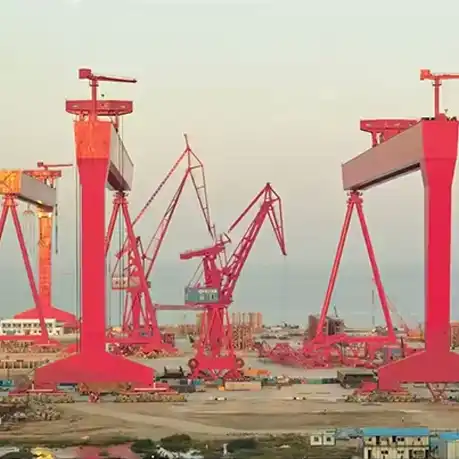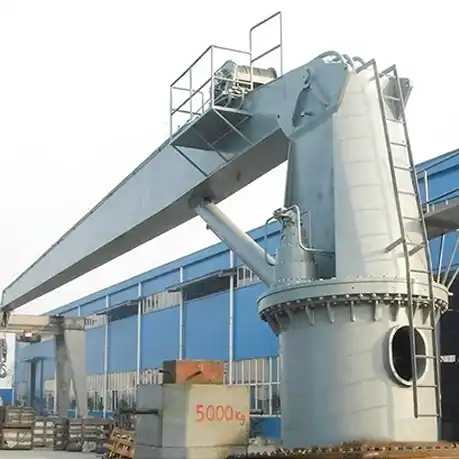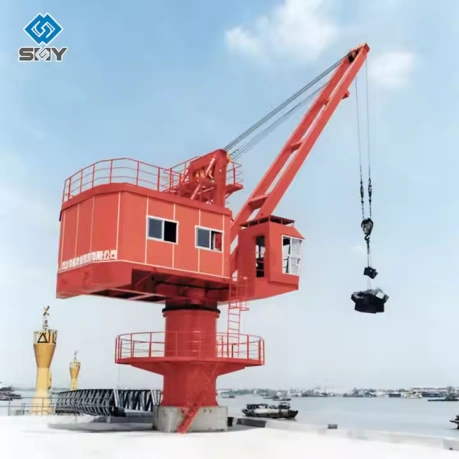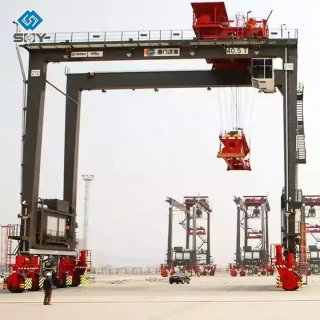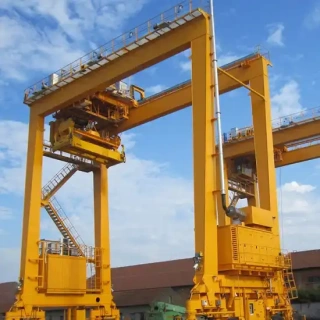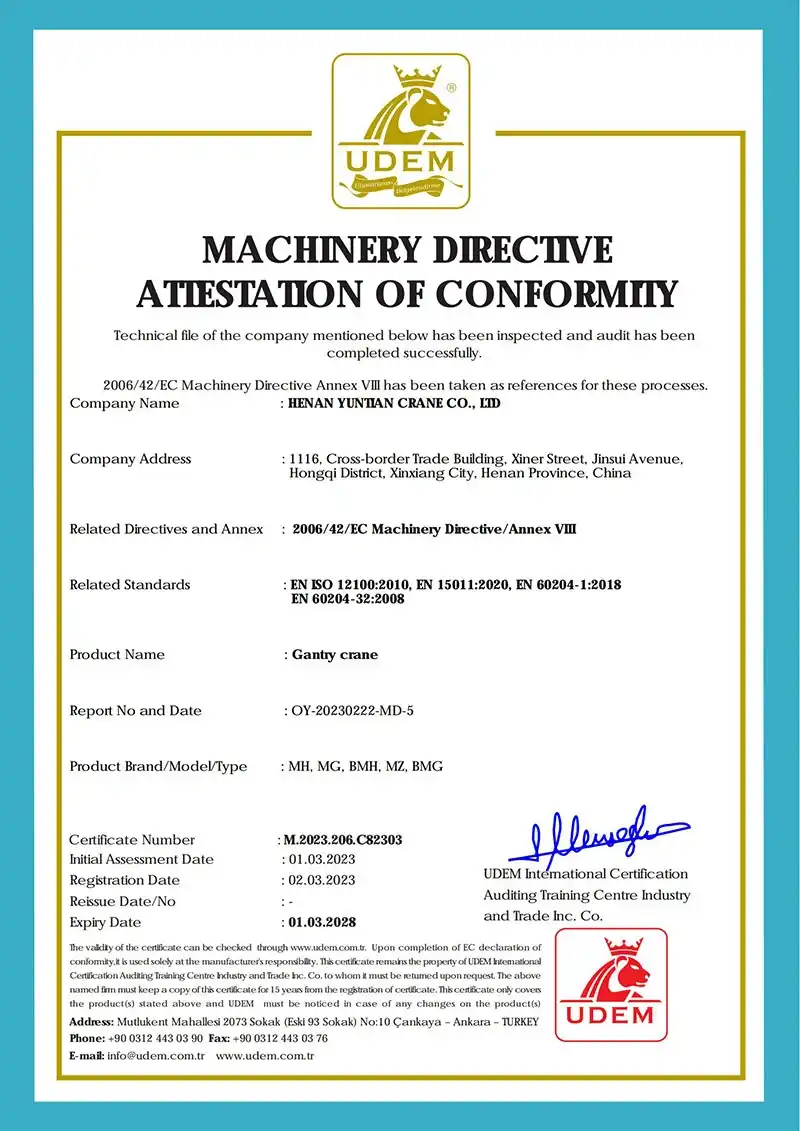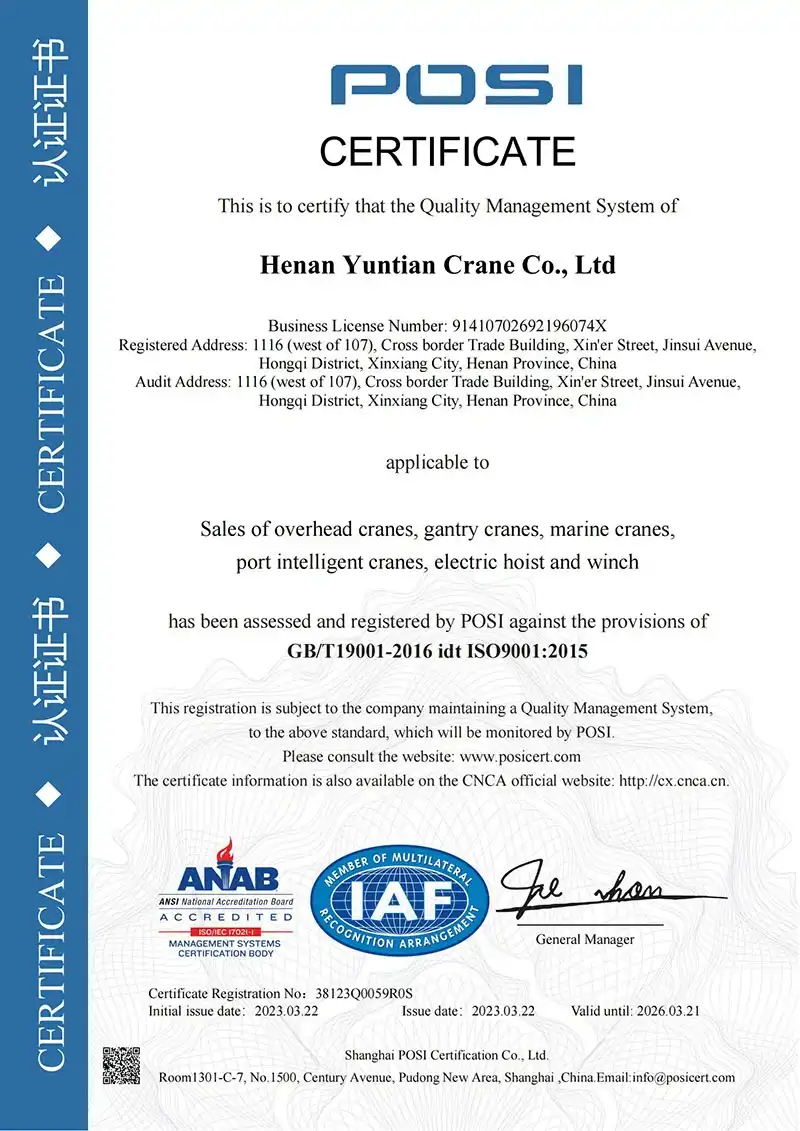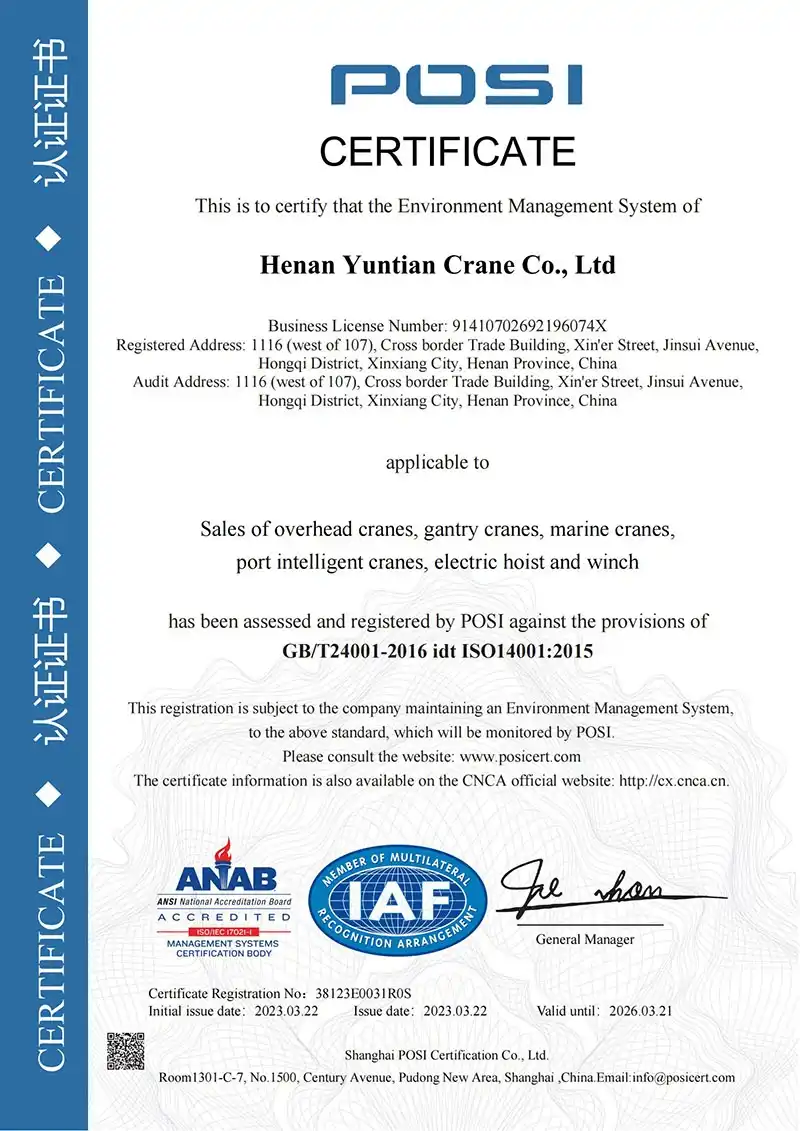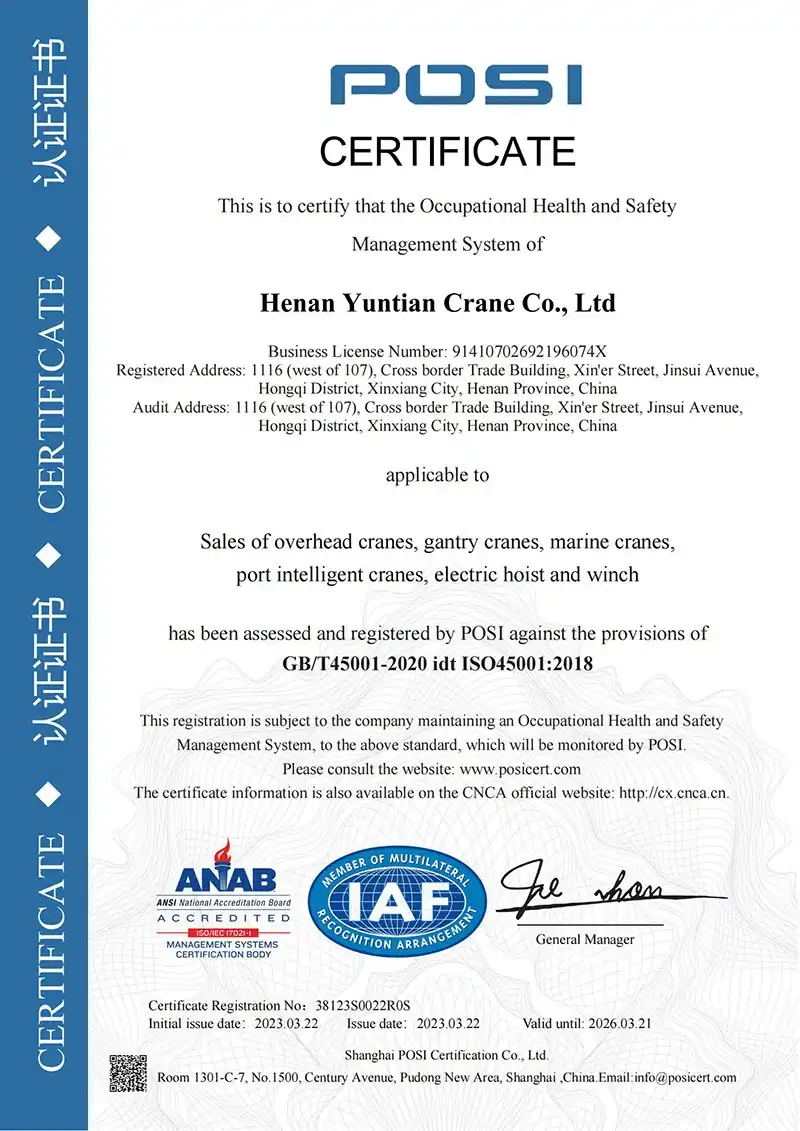





Key Advantages of Rubber Tyre Container Gantry Crane (RTG)
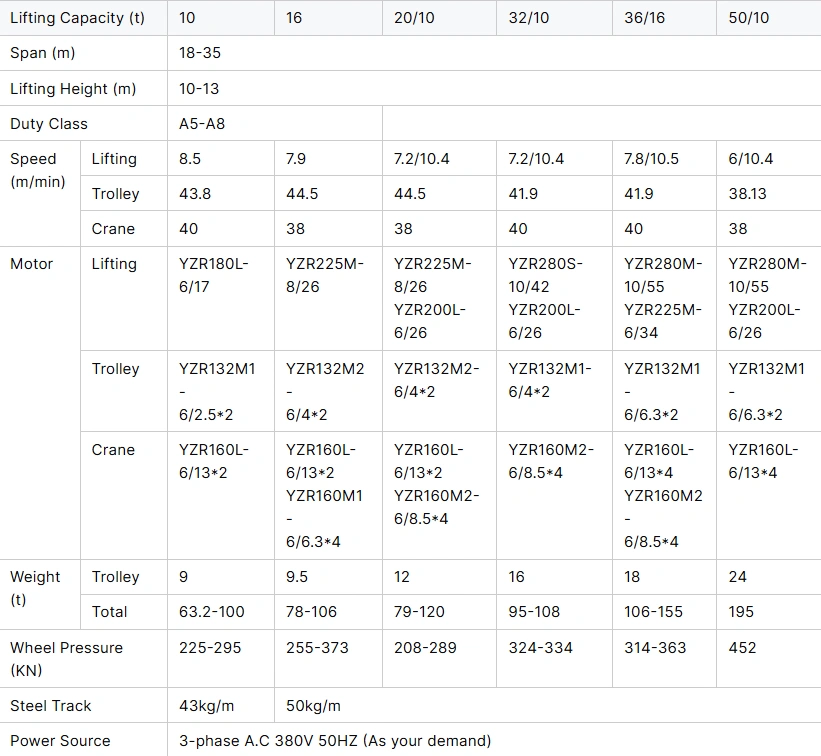
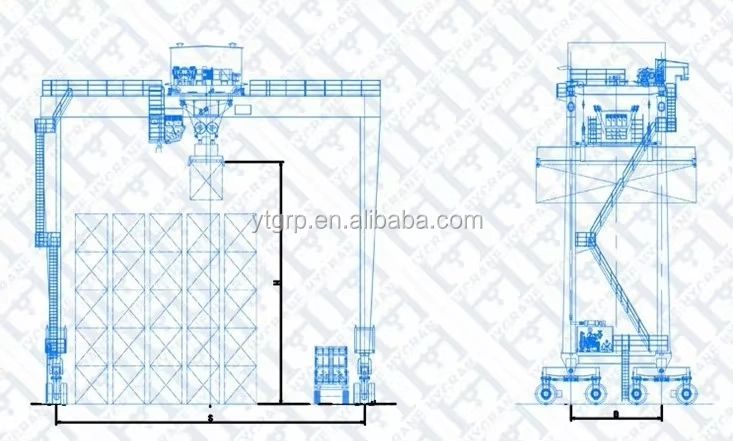
1. Great Mobility and Flexibility
Rubber tires allow the crane to move in all directions. It can go straight, sideways, turn between 0-90°, and even spin in place.
It does not need fixed rails. This makes it perfect for busy port yards, logistics centers, and intermodal terminals.
It works well even on uneven ground thanks to its strong tires.
2. Different Power Choices for Saving Energy
It can use a diesel generator to run on its own.
It can use hybrid systems with cable reels or lithium batteries. These save up to 30% fuel compared to older RTGs.
It can also use main electricity for zero emissions in powered terminals.
3. Better Safety and Automation
It uses PLC and AC frequency control for smooth and accurate movement.
An intelligent monitoring system (CMS) checks the equipment in real time.
Key safety parts include:
Overload protection
Anti-collision systems
Wind resistance with dynamic scanning
Automatic fault detection
4. Strong and Reliable Structure
It comes in single or double girder types. All welding meets international standards for strength.
The beams have special heat-resistant coating.
Modular end carriages use soft-start motors to reduce wear.
5. Smart Container Handling
Auto-positioning and path control work for 20ft, 40ft, and 45ft containers. Custom spreaders are also available.
Smart box-to-box landing reduces mistakes by drivers.
Remote or semi-automatic operation helps save labor.
6. Meets Global Standards
It has CE, ISO, BV, and GOST certifications. It follows FEM, DIN, IEC, AWS, and GB standards.
It uses quality parts like Siemens/Schieder electric systems, combined gear reducers, and strong rubber tires.
It comes with a 1-year warranty and is built for easy maintenance and long life.
Rubber Tyred Gantry Cranes (RTGs) are also called "giant claw machines" because they pick up containers just like a toy claw machine.
RTGs often use a 1-over-5 or 6+1 design. They can lift up to 45 tons and handle special containers.
The efficient lithium battery hybrid system saves energy by recycling power. It supports environmental goals.
When China first started building specialized container terminals, RTGs were becoming popular worldwide. That’s why many ports still use this system today.
Benefits of RTGs include: better use of yard space, lower construction cost, easy operation, and mature maintenance know-how.
They can use automatic steering and connect to computer systems, making it easier to automate yard operations.
RTGs are ideal for container terminals and large storage yards.
Common specs include:
Span: 18m to 29.2m (for 4 to 8 container rows + 1 lane)
Lifting height: 12m to 21m (for stacking 3 to 6 high)
Rated load: usually 40.5 tons (some up to 60 tons)
Lifting speed: 20–26 m/min (with load), 40–55 m/min (no load)
Trolley speed: 70 m/min
-
Gantry speed: 90–135 m/min
The crane sits on 4 to 16 large tires. The number depends on ground pressure.
It may have 2 or 4 driving wheels. To avoid collisions, it uses manual correction and anti-collision sensors.
The trolley uses gear drive and 2 or 4 wheels for smooth movement. The driver sits in a cab under the trolley.
AC or DC speed control offers stable operation and auto-lifting speed adjustment based on load.
Safety features include: overload protection, engine overspeed alarm, high water temperature and low oil pressure alerts, wind meter, typhanchains, emergency stop, limit switches, and signal lights.
Key technical parameters include: lifting height, rated load, span, base, number of wheels, speed (with/without load), lifting speed, trolley speed, and total power.
Basic terms:
Lifting capacity: the weight the spreader can lift.
Rated load: the weight of the container plus the spreader.
Lifting height: how high the spreader can lift a container.
-
Stacking height: how many layers the crane can stack.
Passing height: how many layers the crane can pass over with a container.
Span: the distance between the centers of the two legs.
-
Base: the distance between the axles on one leg.
A typical work cycle includes taking a container from a truck and putting it in the stack, or the reverse. Containers are placed 400mm apart.
The main job of the RTG is to load or unload trucks continuously. It can lift full loads at full speed. It can move the trolley and gantry at the same time.
A standard productivity cycle includes: lifting a container from the truck, moving the trolley to the stack, lowering the container, then returning empty to the truck.
When working with trucks, the chassis height is about 1.5m. Note that lifting height changes based on the stack level.
Productivity is measured in boxes moved per hour. It is calculated as:
Number of boxes per cycle × Cycles per hour
Many factors affect productivity: speed and acceleration of each mechanism, type of cargo, position, hatch condition, water level, driver’s view, and skill.
Why Choose Our RTG Cranes?
✅ Used in more than 50 countries. Trusted by ports, rail yards, and big logistics companies.
✅ Save 30% energy compared to older RTGs. Works with hybrid and electric power.
✅ Stack containers 5 high. Uses yard space very well.
✅ Remote monitoring 24/7. Helps avoid breakdowns.
Where RTG Cranes Are Used:
Container terminals, rail yards, cold storage, empty container depots, and smart automated ports.
Need a custom RTG solution? [Contact our engineers today →]
RTG (Rubber Tyred Gantry Crane) is mainly used for loading, unloading, and stacking containers in port yards. Here are its main uses:
Container Yard Operations
RTG moves easily in the yard. It stacks containers, unpacks stacks, and moves containers short distances. Its rubber tires let it move between areas quickly. It fits different yard layouts.
Works with Quay Cranes
RTG works with ship-to-shore cranes. It moves containers unloaded from the ship to the yard. It also takes containers from the yard to the quay crane for loading.
Rail Yard Operations
In ports with train tracks, RTG unloads containers from trains and stacks them. It can also load containers onto trains. This helps connect ship and train transport.
Emergency Relocation
If yard equipment is being repaired or the layout changes, RTG can quickly move to another yard. This keeps the port running.
Automated Operations After Smart Upgrades
After smart upgrades, RTG can work automatically. It can organize containers, guide trucks, and be controlled remotely. This makes work faster and safer. It also reduces labor costs.
RTG is important in ports because it moves easily and is flexible. It is especially good for upgrading traditional container terminals.
RTG uses 8 pneumatic rubber tires to support its structure. It has a self-propelled trolley and a spreader to handle containers. Its main frame is a box-type welded structure. It has three main systems: gantry movement, trolley movement, and hoisting.
As ships get bigger and technology improves, automated container terminals are growing quickly. Port equipment must also improve. Now, there are even cranes that can lift two 40-foot containers or four 20-foot containers at once. So, port operators also want better control systems for RTG.
Many large ports now use automation and remote control for RTG. This makes terminal operations digital and smart. By adding many types of sensors and computing units, the RTG can sense, analyze, and decide intelligently. This makes the system safe and reliable.
After smart upgrades, RTG can do more than basic tasks. It can automatically manage containers in the yard, handle trucks, and position itself accurately. It also includes container ID recognition, truck guidance, remote control, and fault detection.
Key Features of Smart RTG:
Automatic positioning and correction for the gantry
AI recognition of truck and container numbers
Automatic operation anywhere in the yard
Automated container organizing
Truck guidance and one-click landing
Multiple remote control stations can control multiple cranes
Safety detection in the work area
Works with terminal operating systems
Easy to upgrade later
In the future, automated RTG control will replace manual operation. Remote control will become standard. The working environment and operator comfort will also improve.
Safety is very important in automation. Operators cannot handle problems on the spot. So, automated systems must be extra safe. Upgraded RTG includes strong safety systems like anti-collision, anti-knockover, truck anti-lift, and area monitoring. This keeps workers and equipment safe. It also improves efficiency and reduces operating costs.
In our RTG automation solution, smart RTG works like an invisible tech hand. It handles containers smoothly and efficiently. It senses trucks, picks up and puts down containers accurately, and operates safely. It enables fully unmanned, high-precision, 24/7 operation with full monitoring.



